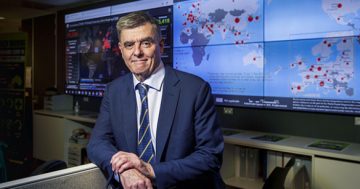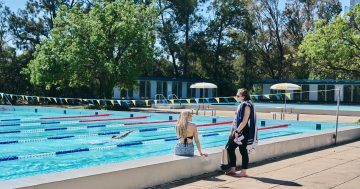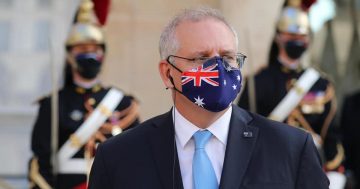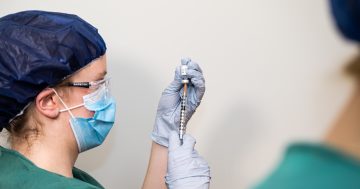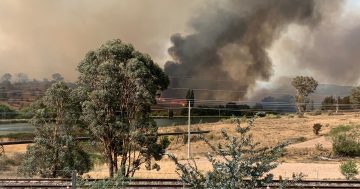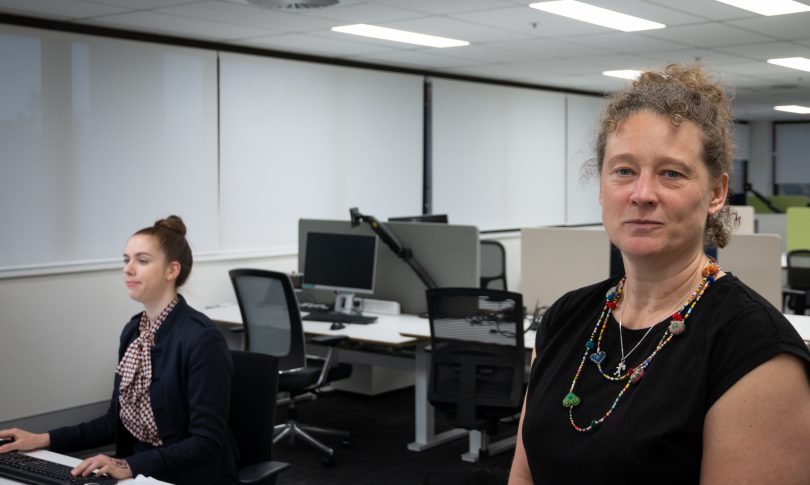
Dr Coleman (right) may be one of the main faces of the ACT’s COVID-19 response, but she is just one member of a team that works together in the background. Photo: Dominic Giannini.
Normally, you might only hear from ACT Chief Health Officer (CHO) a handful of times each year because the cogs of ACT Health mostly turn behind the scenes, but Dr Kerryn Coleman has risen to prominence because of the COVID-19 pandemic.
Minus some small breaks, it can be a 24-hour job.
“At the moment [the phone] has to be on all the time,” Dr Coleman tells Region Media. “[Winding down] is really hard some days. It depends how active you are and I think it is the same for everybody.
“I use the drive home to separate work from home; use at least an hour at home to [cook with my partner] and after that do what I need to do.”
Sometimes that will be a sneaky episode of a Nordic noir crime drama, she says.
As the ACT’s primary health expert, Dr Coleman sits through daily meetings with her state, territory and national counterparts on the Australian Health Protection Principal Committee (AHPPC), the principal advisory body to the National Cabinet.
The two-hour meeting can be draining and an endurance test, but as the CHO fronts almost daily press conferences with the latest announcements during the COVID-19 crisis, it’s become a staple of the pandemic work routine.
These discussions are then used to inform local policy perspectives with relevant departments, although Dr Coleman cannot disclose which minister asks the most questions.
“They all have their strengths and their portfolios,” she laughs.
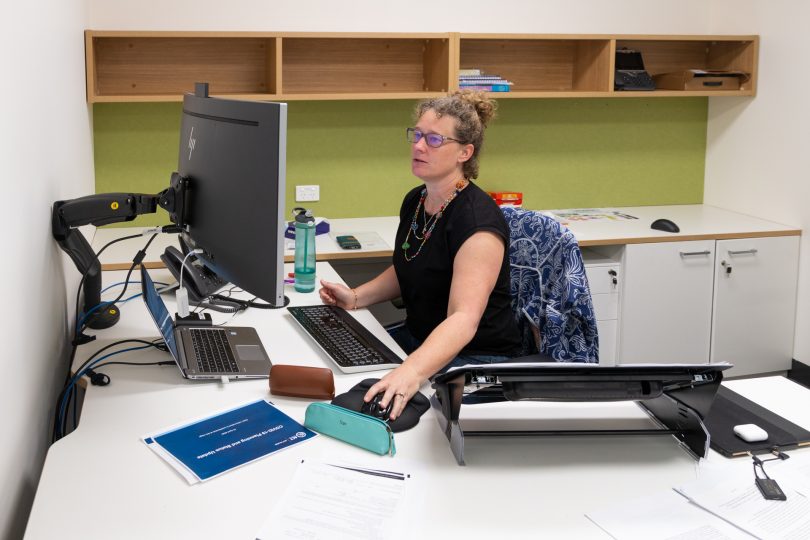
ACT Chief Health Officer Dr Kerryn Coleman sets herself up for another “typical” day during a pandemic – if there is such thing. Photo: Dominic Giannini.
“We talk regularly with both the Health Minister and other parts of the directorate, just to make sure they are up to date and we can answer any questions, but we do have a formal brief prior to National Cabinet,” says Dr Coleman.
Case statistics flow through at around 9:30 am each morning, detailing the previous days’ number before the CHO combs over them and sets up the daily press conference. At the height of the pandemic in the ACT, 11 new cases were diagnosed in a single day, and while ACT Health was scrambling to track down all close contacts, some members of the public grew frustrated at the dissemination of official information.
Comments in local media have sometimes questioned ACT Health about the lack of information in their announcements. Most recently, readers scrambled to figure out if the most recent diagnosis was active or not.
Dr Coleman says in public health, balancing public security with personal privacy is always a challenge, and social media can add to that complexity – especially when speculation and hyperbole take hold.
“We work with making sure we give accurate information as soon as we can,” she says. “We have had to work really hard to balance the messaging and perspectives. Utmost is the public’s health, but equally important is an individual’s right to privacy and confidentiality.
“I think everyone has an opinion and that is OK. We do our job and we get the information out as quickly as we can that is needed for people to make those decisions.
“I am really not interested in talking about individual people’s perceptions on social media.”
Primarily, public safety is paramount during a pandemic. That role goes beyond the CHO to the more camera-shy workers of ACT Health who operate out of the public view, but with the same energy.
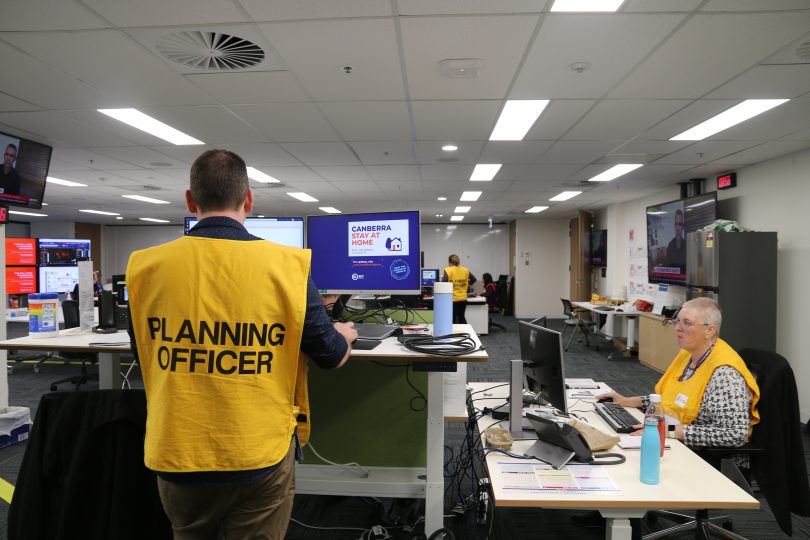
A planning officer works on COVID-19 contingency plans behind the scenes at ACT Health. Photo: Dominic Giannini.
Logistics officers work across seven-day rosters to ensure every healthcare worker has the required amount of personal protective equipment (PPE) and that contingency plans are put in place in case a second wave of COVID-19 breaks out.
They liaise directly with the national medical stockpile to ensure the pathway to Australia’s last line of medical defence is as smooth as possible should the ACT need to pull that emergency lever.
Across the room, a planning officer draws up contingency plans for worst-case scenarios across different governmental departments – a plan for transport if an infected person gets a local bus, a plan for justice if an inmate is found to be contagious, a plan for health if an emergency department staff member tests positive… the plans go on.
And this is all in a day’s work.












